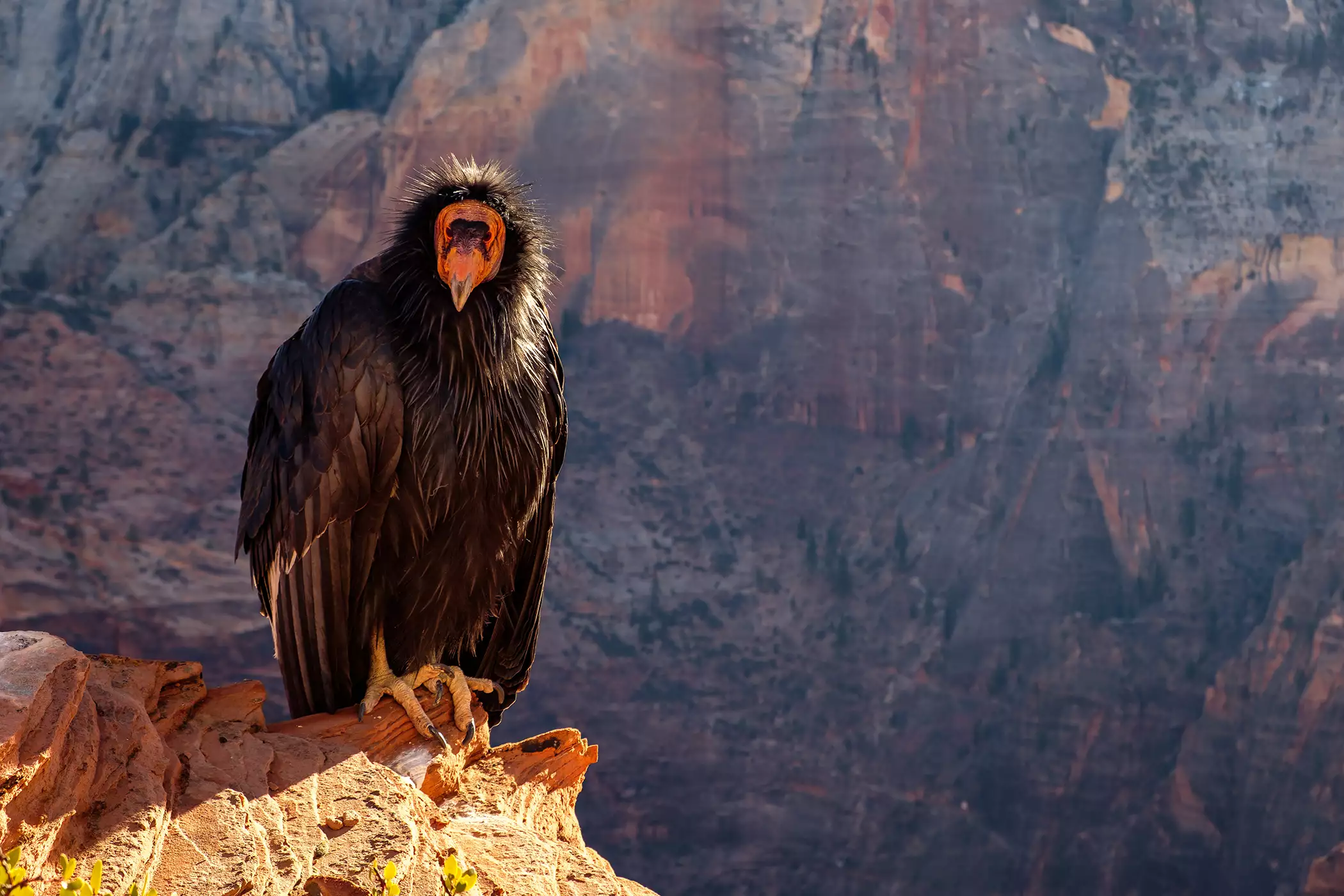
Protecting the Condors of California
The Wind Energy Condor Action Team (WECAT) is comprised of multiple wind energy operators collaborating to protect California condors.
WECAT, a 24-member consortium of wind operators have become co-permittees under the Endangered Species Act which will result in supporting the continued conservation of the California condor. The WECAT members will provide over $6 million to The Peregrine Fund for the breeding, rearing, and release of 35 condors over the next 15 years.
In addition, co-permittees are implementing avoidance and minimization measures to reduce the likeliness that a California condor would ever be harmed by a wind turbine. To date, there are no records of a California condor being injured by a wind turbine. Therefore, this commitment represents the collective interest and partnership of the wind energy community to protect the California condor and an example of successfully acquiring a multi-party US Fish and Wildlife Service Section 10a Incidental Take Permit.
The WECAT Story
The WECAT is a consortium of 24 wind energy companies located in the Tehachapi Wind Resource Area (TWRA) in southern California. The WECAT members were issued an U.S. Fish and Wildlife Incidental Take Permit under the Endangered Species Act for the incidental take of the California condor (Gymnogyps californianus). As part of receiving the permit, the WECAT members developed a Condor Conservation Plan (CCP) outlining multiple conservation actions while providing continued production of renewable energy in the region.
The WECAT will provide The Peregrine Fund over $6 million dollars to rear and release at least 35 new condors. The 24 WECAT co-permittees also commit to avoiding and minimizing the risk to California condors. The California condors are attracted to areas where carrion (dead animals) is present. The CCP includes removing this attraction by implementing a carrion management program in the wind resource area to minimize the presence of the California condor. In addition, the co-permittees participate in an advanced condor detection system where condors carry VHF and GSM tags on their wings.
When a condor flies through a “geo-fence” (signal field) the tags send signals to a tower operator who then notifies the wind operators that condors are in the area. If the condors are within certain proximity to the wind turbines, operators curtail wind turbine blades until the area is considered clear of the risk. These measures provide necessary avoidance and minimization measures to protect the condor. These detection and curtailment measures have been voluntarily followed by many TWRA operators as a commitment to further minimizing the risk to the California condor.
The WECAT members were able to successfully secure the USFWS permit and develop the conservation plan through the assistance of ICF International Inc. for preparation of the Condor Conservation Plan and NEPA document, Camas LLC providing facilitation and overall permit process project management, and Cox, Castle and Nicholson, LLP for legal agreements and overall legal support.
“We are committed to ensuring that our wind project operations minimize and mitigate potential impacts on California condors. This plan builds on lessons learned and best practices in the region and will continue to ensure that our operations occur in a way that minimizes impacts.”
“We have been implementing avoidance and minimization measures for years. This conservation plan codifies our practices, creates a common standard for most operators, and provides mitigation regardless of a take. We are looking forward to implementation.”




